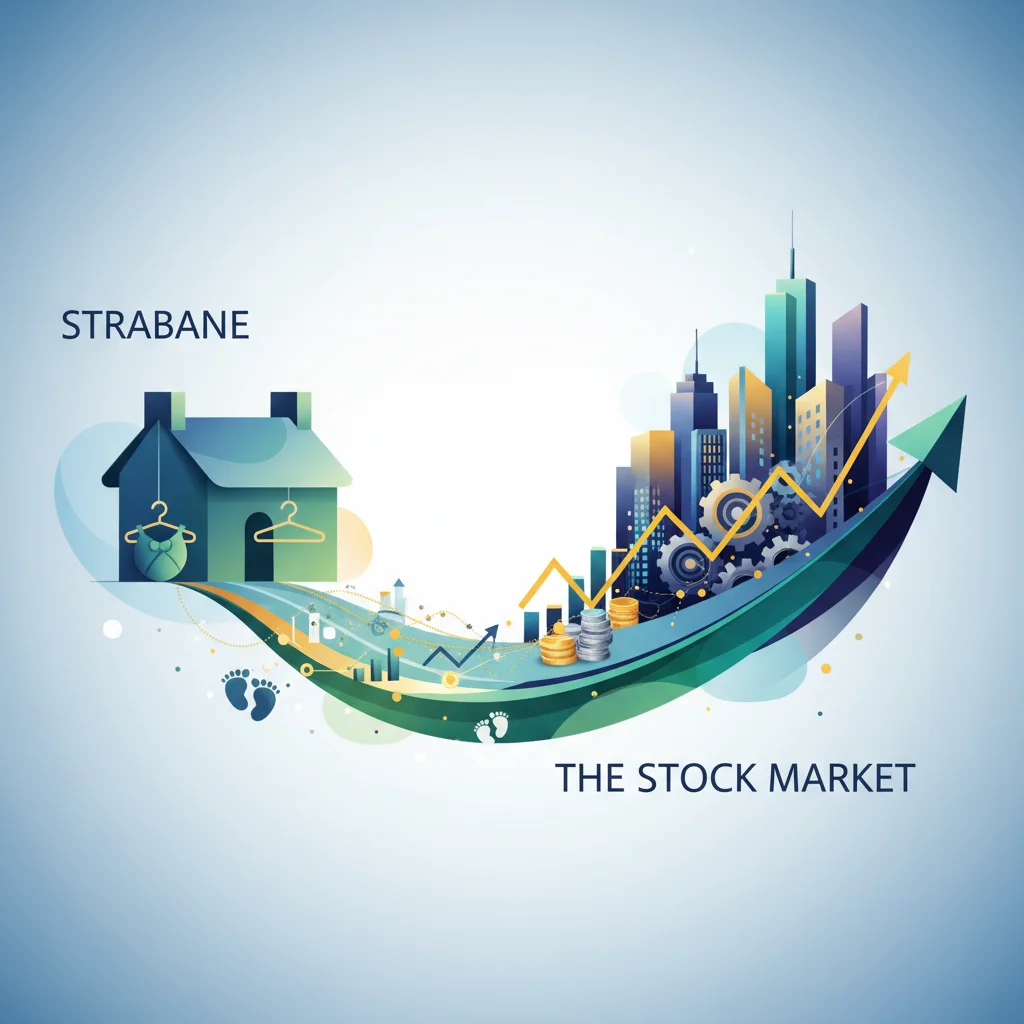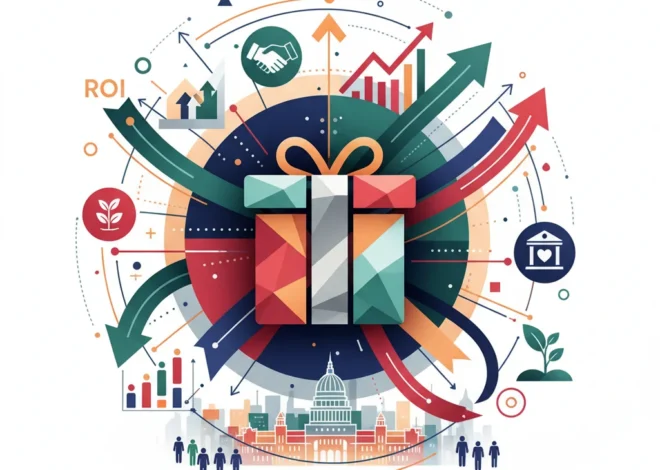
From Strabane to the Stock Market: What a Baby Clothes Bank Reveals About Our Modern Economy
In the small town of Strabane, Northern Ireland, a new initiative has emerged from the pressures of our time. A local scheme is now offering free baby clothes to families, a simple act of community support born from a complex and far-reaching economic reality. The headline captures the sentiment perfectly: “‘The cost-of-living crisis has hit an awful lot of families hard’,” as one organizer noted. While on the surface this is a story of local hardship and heartwarming charity, it serves as a powerful microcosm—a ground-level indicator of the immense macroeconomic forces shaping our world, from household budgets to high-frequency trading.
This single data point from a small town invites a broader, more critical examination. How did we arrive at a place where basic necessities for a newborn are a financial strain for so many? What does this signal to investors, business leaders, and financial professionals? The answer lies in connecting the dots between Main Street struggles and the abstract charts of the global economy. This isn’t just a story about charity; it’s a story about inflation, wage stagnation, the widening wealth gap, and the urgent need for innovative solutions from the worlds of finance and technology.
The Macroeconomic Storm: Deconstructing the Cost-of-Living Crisis
The “cost-of-living crisis” is a term that has moved from economic journals to kitchen table conversations. At its core, it describes a situation where the price of essential goods and services—food, energy, housing—rises faster than household incomes. This isn’t a localized issue; it’s a global phenomenon driven by a confluence of factors, including post-pandemic supply chain disruptions, geopolitical conflicts, and the monetary policies enacted by central banks.
For years, major economies operated in a low-interest-rate environment. Central banking institutions, like the Bank of England and the U.S. Federal Reserve, kept rates near zero to stimulate economic growth. However, when inflation began to surge, their primary tool was to raise interest rates aggressively. While this is a standard textbook response to cool an overheating economy, it has profound real-world consequences. Higher rates make borrowing more expensive for both consumers (mortgages, credit cards) and businesses, slowing down economic activity. For families already on the financial edge, this squeeze is acute. Savings dwindle, and debt becomes a heavier burden.
To illustrate the pressure on households, consider the divergence between wage growth and inflation. While wages may have increased nominally, their real value has often declined.
Below is a simplified representation of how these pressures have mounted on a typical family’s budget over the past few years.
| Expense Category | Change (Approx. 2021-2024) | Impact on Household Finance |
|---|---|---|
| Energy (Gas/Electric) | +40% to 60% | Significant reduction in discretionary income; forces trade-offs with other essentials. |
| Groceries | +20% to 25% | Increased food budget stress, potential for food insecurity. (Source: ONS) |
| Mortgage/Rent | +15% to 30% | Largest single expense increase for many, directly impacting housing stability. |
| Average Wage Growth | +10% to 15% | Wages have not kept pace with the rising cost of core necessities, leading to a net loss in purchasing power. |
This data paints a clear picture: income is not keeping pace with expenses. The result is that families are forced to make difficult choices, and for some, providing even the basics for a new child becomes a source of significant financial anxiety. The Strabane baby clothes bank is not an isolated event; it’s a direct consequence of these macroeconomic trends playing out at the most personal level.
The £2.1 Billion Keyboard Stroke: How a Cyber Attack Became the UK's Costliest Financial Disaster
The Widening Chasm: Financial Inclusion in an Age of Inequality
The cost-of-living crisis does not affect everyone equally. It disproportionately impacts lower and middle-income households who spend a larger percentage of their income on essentials. This exacerbates the existing wealth gap, creating a society of “haves” and “have-nots” where financial resilience is a luxury. Those with assets—like property or a robust stock portfolio—may have seen their wealth protected or even grow during inflationary periods. Conversely, those who rely solely on wages have seen their financial standing erode.
This erosion of financial stability has severe consequences. It pushes people towards high-interest debt, depletes savings meant for retirement or emergencies, and creates a cycle of financial precarity that can span generations. It also highlights a critical failure in the traditional finance and banking system: a lack of accessible and fair financial tools for those who need them most. Many individuals are underbanked or unbanked, locked out of services that could help them build wealth or manage their finances effectively.
Community-led initiatives like the one in Strabane are a testament to human resilience, but they are also a sign that formal systems are failing. They are a patch on a systemic issue. The real, long-term solution requires a fundamental rethinking of how we approach financial inclusion and economic empowerment.
A Turning Tide? Unpacking the UK's Surprise Inflation Drop and What It Means for the Economy
Enter FinTech and Blockchain: Technological Solutions to Human Problems?
This is where the conversation pivots towards the future, specifically to the role of financial technology (fintech) and other emerging technologies like blockchain. While technology is not a panacea, it offers a powerful toolkit to address some of the core issues highlighted by the Strabane example.
1. Enhancing Financial Literacy and Management
Modern fintech has democratized access to sophisticated financial management tools. Budgeting apps, AI-powered savings platforms, and micro-investing services can empower individuals to take control of their finances. These tools can help users track spending, identify savings opportunities, and even begin investing with very small amounts of capital, breaking down the traditional barriers to entry in the stock market.
2. Creating Alternative Credit and Lending Models
Traditional credit scoring often excludes individuals with thin or non-existent credit files. Fintech companies are leveraging alternative data sources (like utility payments or rental history) and machine learning to create more inclusive credit scoring models. This can provide access to fair and affordable credit, offering an alternative to predatory payday lenders that thrive in times of economic hardship.
3. The Promise of Blockchain and Decentralized Finance (DeFi)
While still a nascent field, blockchain technology holds significant promise. For charitable initiatives like the Strabane baby bank, blockchain could offer a transparent ledger for donations, ensuring that funds are used effectively and efficiently. Beyond charity, decentralized finance (DeFi) aims to build a more open and accessible financial system. By reducing reliance on traditional intermediaries, DeFi could potentially lower the costs of financial services like remittances and lending, which would be a major benefit for low-income populations globally. According to some reports, the DeFi market is projected to grow substantially, signaling a shift in how we think about financial infrastructure (source).
4. Democratizing Trading and Investment
The rise of commission-free trading platforms has made it easier than ever for individuals to participate in the financial markets. While this comes with its own set of risks, it also represents an opportunity for wealth creation. The key is coupling this access with robust educational resources to ensure that new investors understand the principles of long-term investing rather than engaging in speculative gambling.
A Call to Action for Leaders in Finance and Business
The story of the Strabane baby clothes bank should serve as more than just a human-interest piece; it should be a call to action for business leaders and investors. A healthy economy is not one that simply boasts a high GDP or a bullish stock market; it is one where prosperity is broadly shared and citizens are financially resilient.
For business leaders, this means considering the concept of a “living wage” over a minimum wage, investing in employee financial wellness programs, and recognizing that their workforce’s financial stress impacts productivity and retention. For investors, it means looking beyond short-term profits and exploring the growing field of impact investing—directing capital towards companies and funds that generate positive social and environmental impact alongside financial returns.
The financial services industry has a particular responsibility. It must innovate not just for the affluent but for everyone. The development of inclusive fintech products is not just a matter of corporate social responsibility; it is a massive, untapped market opportunity. By serving the underbanked and financially stressed, companies can build loyal customer bases and contribute to a more stable and equitable economic system.
The £2.1 Billion Breach: How the Jaguar Land Rover Hack Rewrote the Rules of Financial Risk
Conclusion: From a Local Gesture to a Global Imperative
The simple, compassionate act of providing free baby clothes in Strabane is a powerful symbol. It represents the failure of our economic systems to provide basic security for all, but it also represents the enduring power of community. However, community spirit alone cannot solve a crisis rooted in global economics and systemic financial structures.
The path forward requires a multi-pronged approach. Policymakers must address the root causes of inflation and inequality. The finance and banking sectors must leverage financial technology to build more inclusive and accessible systems. Investors and business leaders must recognize that long-term, sustainable growth is impossible when a significant portion of the population is left behind. The story of Strabane is not just happening in Strabane. It is a quiet alarm sounding in communities across the world, urging us to look beyond the headlines and build an economy that works for everyone.


